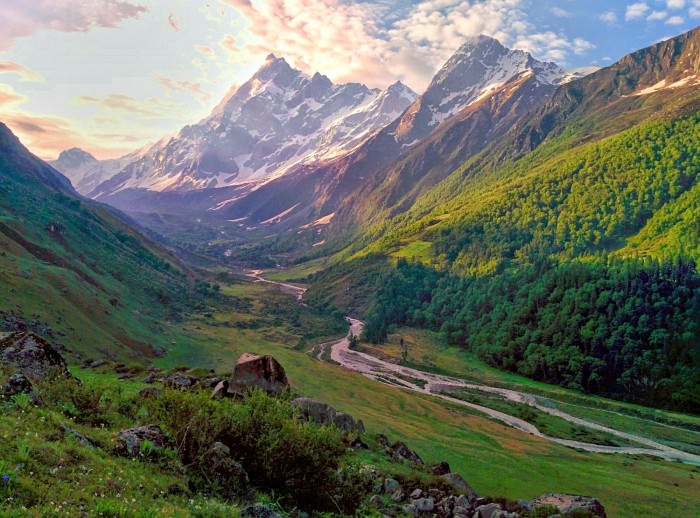Yes, Duryodhana temple exists. Very much.
Mahabharata is, hands down, the greatest epic ever written and its characters have been equally legendary. Be it fallen heroes like Abhimanyu, Karna and Bhishma or the omniscient Lord Krishna guiding hesitant Arjun into the war. One thing Mahabharata subtly conveys is the notion of the grey character of a human being as opposed to pure black or white. In other words, no one is entirely saint or entirely sinner.
Duryodhana is no different from the rest. He has always been seen as a treacherous villain in the Kurushetra War. For many, the mere name ‘Duryodhana’ provokes a thought of evil and deceit. Yet his name has always meant a warrior who is difficult to defeat or someone who is extremely difficult to fight or wage war against (‘Dur’ = unconquerable, ‘Yodha’ = warrior).
Despite his wrong doings, he was considered by many scholars as a fair king, a brilliant strategist and a dutiful Kshatriya. Even in his last battle, he decided to choose the strongest of all Pandavas – Bheema as his opponent, knowing very well he could have easily defeated others, owing to his superior skills in a mace duel (gada-yudha). His friendship with Karna is an epitome of loyalty, trust and indiscrimination.
Believe it or not, there are villages in Uttarakhand where Duryodhana has been worshiped as a deity. A Duryodhana temple in Jakhol village in Uttarkashi district of Uttarakhand was built by the inhabitants of Saur, who worship Kauravas as their ancestors. Other temples dedicated to the antihero of Mahabharata can be seen at Osla, Kotegoan and Datmir.
It is believed that Duryodhana once traveled to Hanol in Jaunsar-Bawar region of Uttarakhand and fell in love with its pristine natural beauty. He requested the local deity Mahasu for a valley to be granted to him next to the Himalayas. Mahasu agrees and bestowed upon him this piece of land with a promise that Duryodhana will take care of the people in this region. Legend has it that local people wept so profusely over the defeat of Kauravas and the subsequent death of Duryodhana that their tears became a river named Tamas (literally means suffering) which is presently known as Tons and flows into the upper region of Western Garhwal.
People worship Duryodhana not because he is evil but because he is powerful. He is thought to wield power to bring rain or withheld it. Rain is a source of life giving water for the locals and their crops. Moreover, it is alleged that ancestors of the local populace of this region swore allegiance to Duryodhana and have fought besides Kauravas in the Kurushetra War. So when they worship Duryodhana, they are actually being respectful to their ancestors. To do otherwise will be disgraceful.
Hence to the outsiders, worship of Duryodhana and its influence over the upper reaches of Western Garhwal may seem ill-omened but to the devotees, it is a part of their ancestral worship.

The enchanting Har Ki Dun valley of the Tons river basin. (Photo credit: Wikipedia)
The upper valleys of the Tons river basin have been inaccessible to the outsiders for centuries. Even the kings of Garhwal and British regime have steered clear of the region. This isolation might have been the reason for the distinctive and unorthodox customs and traditions that are or were prevalent in the region, including the fondness of the Kaurava king.
Pandavas, the heroes of Mahabharata have a strong devotional following in majority of the regions in Uttarakhand. Various clans consider themselves to be descendants of the Pandavas and the adherents of the infamous Duryodhana are clearly aware that other factions of Hindus consider them perverse because they worship a villain. In modern times, the younger generation now firmly believes that the god that is worshiped in the region is not Duryodhana but Someshvara, a manifestation of the great Lord Shiva. Therefore, the cult of Duryodhana worship is slowly fading away as locals are trying to align themselves to a more contemporary, virtuous and widely-accepted belief system under Hinduism.
One thing is for certain – religion is dynamic and ever-changing. The ideology could never stay the same and continues to evolve over time. The various sects within Hinduism like Shaivism, Vaishnavism, Smartism and Shaktism are perfect examples of this perpetual change in the religious mindsets over time. Thus it comes as no surprise that the outlook of the newer generation in the upper region of Tons valley is undergoing a transformation. A transformation in their faith, belief and more importantly, their identity.
Duryodhana was extremely powerful, immensely strong and the most invincible warrior prince ever lived. He is the one and only “the mightiest prince regent of Hastinapur “. He is not a villian. Stop disrespecting him. He was never wrong.It was his kingdom, which he didn’t wanted to give to the outsiders. Pandavas had no right on his kingdom. So, there’s nothing wrong to keep with you, what is already yours (Duryodhana’s ).